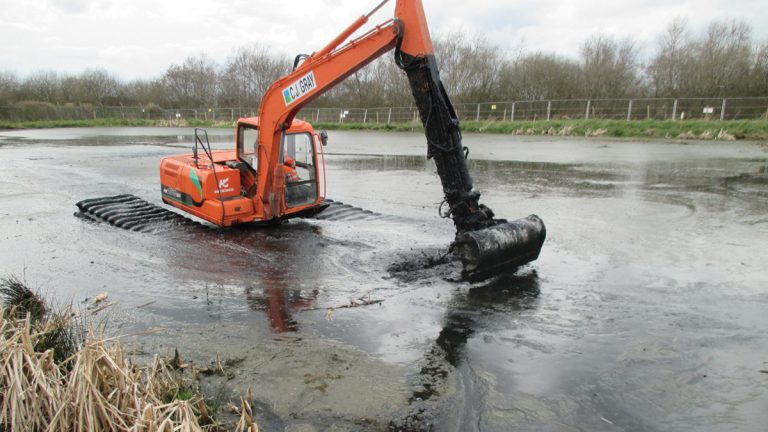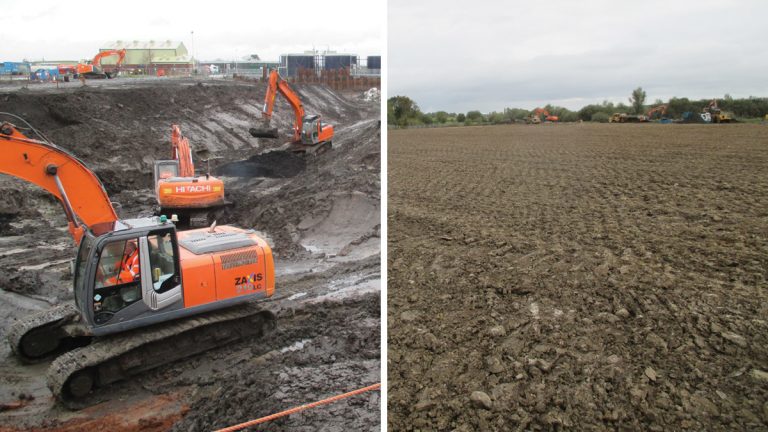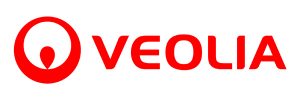Ballynacor Sewage Lagoon Project (2016)

Ballynacor WwTW aerial view - Courtesy Richard Tyreman
Project Omega is a 25 year Public Private Partnership contract issued by Northern Ireland Water (NI Water) to upgrade, operate and maintain existing wastewater treatment works (WwTW) and wastewater pumping stations (WwPS) at a number of locations across Northern Ireland, equivalent to approximately 25% of the province’s wastewater treatment capacity. The contract also provides a wastewater sludge disposal service for all of Northern Ireland’s wastewater treatment works sludges. This service is currently provided through an incineration based solution at Belfast’s Duncrue Street. The Design, Build, Finance & Operate contract commenced in March 2007 and it has provided significant benefits in terms of achieving EU Wastewater Directive compliance in a timely and cost effective manner. The contractor, Glen Water Ltd, is a consortium of Laing O’Rourke and Veolia Water companies who will operate and maintain the wastewater services up to 2032.
Sludge lagoon remediation works
As part of Project Omega Glen Water was required to remediate a number of contaminated sewage sludge lagoons at the Ballynacor Wastewater Treatment Works (WwTW). VertaseFLI is a specialist remediation contractor and was appointed by EPC, the Glen Water construction delivery company, on behalf of NI Water, to undertake the lagoon remediation works.
Set on the southern shores of Lough Neagh, the site comprised five sewage lagoons attached to the operational WwTW. The lagoons were historically used as settling lagoons for sewage sludge at Ballynacor and also from works in the surrounding area. The use of them ceased a number of years ago and they were no longer required as part of the WwTW with the arrival of sludge dewatering facilities in 2003. The lagoons occupied 90% of the 5 hectare site and contained over 25,000m3 of supernatant waters and over 90,000m3 of sewage sludge.
This liquid sludge comprised only 5-10% dry solids and contained organic (petroleum hydrocarbon), amine and heavy metal contamination that meant the lagoons were a potential on-going source of contamination and presented an unacceptable risk to the environment, most notably the local water resources and the nearby Lough Neagh, a sensitive ASSI site.
The traditional solution to a problem of this nature is to remove the contaminated sludge from the site and dispose it to landfill. However the EPC and their environmental consultant, Wardell Armstrong approached VertaseFLI to discuss the potential for treating the sludge and reusing it on site as a recovered material.

(left) Sludge agitation and recovery and (right) lagoon investigation works – Courtesy VertaseFLI
Stabilisation and solidification
To enable the reuse of the treated sludge on site, detailed quantitative risk assessments to produce site specific remedial targets for the remediation works were undertaken. VertaseFLI then undertook remedial design investigations and a detailed options appraisal. This appraisal identified stabilisation and solidification (S/S) of the sludge lagoons as not only the best remediation option but the only option able to generate a fully treated material suitable for reuse on site.
S/S is a civil-engineering based remedial technology that is increasingly being used to remediate contaminated sites. Contaminants are not removed from the treated media, but contained within a solid matrix achieved by the addition of cementitious or pozzolanic binder additives. These both improve the physical characteristics of the material whilst also chemically reducing the mobility, leachability and toxicity of contaminants.
However stabilisation of a sewage sludge material with an extremely high moisture content (>90%), high organic loading (>95%), and an elevated bacterial count along with the contamination presented a number of problems and challenges and detailed feasibility testing and trials were undertaken to arrive at a design solution.

Sludge recovery – Courtesy of VertaseFLI
Scheme overview
VertaseFLI successfully completed the treatment via S/S of over 90,000m3 of contaminated sewage sludge during an 18 month site presence. To deliver the works a complex treatment train was devised which comprised the following key components:
- Mobile sludge cutting and pumping systems.
- Centrifugation of the pumped sludge.
- Wastewater treatment of recovered supernatant and centrate.
- Stabilisation of the dewatered filter cake through a bespoke batching plant.
- Stabilisation of residual basal sludge using ex situ processing.
- Diversion from landfill and reuse of incinerator ash.
- Reinstatement of treated material in lagoon voids and site re-profiling.
- Reuse of historic construction arisings.
- Re-profiling and ecological enhancement.
Supernatant overlying the sludge within the lagoons was pumped and treated using an on-site temporary water treatment plant. The sludge itself was pumped from the lagoon using a series of specialist sludge cutting and pumping systems. These delivered the sludge to a mobile centrifuge that dewatered the sludge and created a filter cake with up to 30% dry solids content.
The resulting filter cake was stabilised using a specially designed, bespoke continuous mix sludge stabilisation plant, with the remaining heavy sludge from the lagoon base being treated using more traditional ex situ methods. The centrate produced was collected and passed through the mobile water treatment plant.
All the treated sludge was then reinstated within the lagoons and completed using an existing on-site stockpile of 60,000m3 of construction arisings, produced during an expansion to the WwTW and no material required of-site disposal.

Aerial view of site works – Courtesy Richard Tyreman
Technical innovation
The whole scheme was innovative and demonstrated best practise at a number of levels. Initially and prior to VertaseFLI’s involvement the original concept had been to dispose of the sludge from the lagoons, which was classified as hazardous waste, to landfill. There are no suitable landfills in Northern Ireland and facilities had been identified in England and Belgium and this strategy had been approved by the Regulators.
However the project team was able to re-evaluate the suitability of this and a detailed remediation options appraisal strongly advocated the innovative application of S/S as the most sustainable, cost effective and technically achievable technique and one that would generate a fully treated material suitable for reuse on site, the only option able to achieve all these criteria.
Due to the site being an operational PPC permitted facility it was a requirement of the regulators that the remediation works were undertaken under the regulatory auspices of the Pollution Prevention and Control Regulations (Northern Ireland) 2012, a much more onerous, fixed facility, permitting regime than a temporary mobile waste management license. In accordance with these regulations the remediation works had to demonstrate that they were the best available technique (BAT) and as a result a series of assessments were undertake as part of the detailed design works for the scheme.
A greater emphasis on the role of BAT reference documents (Brefs) was used as part of this assessment, which encouraged an extended assessment of the scope and provision for soil and groundwater protection. As part of the BAT assessment cost-effectiveness, sustainability and technological innovation to help deliver greater environmental benefit are key criteria, all of which the project achieved.
The assessment of BAT for Ballynacor was undertaken in line with the Environment Agency H1 Guidance “Environmental Risk Assessment for Permits” (April 2011) as required by the Northern Ireland Environment Agency (NIEA).
The methodology provided an objective approach to establishing the most appropriate technology for the proposed process, taking into account both the environmental consequences and costs associated with various design options.
The assessment comprised 6 conditions:
- Definition of the objective of the assessment and the options to be considered.
- Quantification of the emissions from each option.
- Quantification of the environmental impacts resulting from the emissions.
- Comparison of the options and ranking in order of best overall environmental performance.
- Evaluation of the costs to implement each option.
- Identification of the option that represents BAT and BPEO by balancing the environmental benefits against cost.
Assessments were undertaken individually for the temporary waste water treatment plant, the dewatering plant methodologies and the stabilisation technique. All of this work ensured that the overall scheme did represent the best option in terms of sustainability, cost effectiveness and environmental benefit.

Treatment compound – Courtesy Richard Tyreman
During the project an opportunity was identified to further enhance the sustainability and environmental credentials of the scheme.
As part of the stabilisation process PFA was used in the treatment of the sludge. However part of Project Omega was to operate an incinerator (for sewage sludge) at a nearby facility. The waste ash residue from the incinerator was sent to landfill for disposal. VertaseFLI demonstrated that the sewage sludge incinerator ash (SIA) material could be preferentially used in the stabilisation process instead of PFA. It was further assessed in accordance with SuRF UK (Sustainable Remediation Forum) guidance and demonstrated no detriment or increased risk to the environment or reduced quality of the stabilised product as a result of using this SIA.
Following significant negotiation and liaison with the regulators an End of Waste status was granted for the use of SIA within the lagoon remediation project. The project accepted an entire years worth of the ash produced by the incinerator and as a result a waste product that was being landfilled was diverted to the Ballynacor site and put to beneficial reuse; a genuine waste and sustainability win-win.
Cost effectiveness
S/S is a relatively low cost remediation technology; it improves both the physical characteristics of the material whilst also chemically reducing the mobility, leachability and toxicity of contaminants. The monolithic material produced would be geotechnically competent following the addition of the stabilisation reagents which would enable the reuse of the treated material on site as backfill within the lagoon voids. This in turn removes the requirement for importing material for this purpose.
Whilst this work at Ballynacor cost a significant amount, in excess of £8m, other potential techniques, such as off-site disposal or thermal treatment, would have cost considerably more (in excess of three times more), rendering the project unaffordable and unviable.
In addition the cost effectiveness of the project was further enhanced through the use of the SIA waste stream. SIA had no viable or economic outlet other than disposal to landfill. This resulted in both a reduction in the volume of other reagents required to treat the sludge and also avoided the cost of landfill disposal of the utilised waste material.
Reducing the pollution burden not transferring it
The use of S/S in this instance not only diverted the contaminated sludge from landfill, either in England or Belgium, but generated a material that had a beneficial use on site as backfill for the lagoon voids. In addition it also utilised another waste material, which would otherwise have been disposed to landfill, in the treatment process, further reducing the pollution burden and enhancing the overall ‘green’ credentials of the project.

(left) Centrifugees dewatering and (right) odour control – Courtesy of VertaseFLI
The stabilisation and solidification design works were undertaken in line with the Environment Agency Guidance Document, including provision of a suitable bench or laboratory scale treatment assessment.
This serves to determine the correct mix of reagents to create a stabilised material capable of successfully delivering the sites remedial objectives and provides confidence that S/S can form a fundamental component of the remedial strategy for the site and constitutes a robust remediation technology for this type of waste.
Leachate assessment was undertaken using the regulator approved tank test methodology, as this represents the most appropriate leaching test for stabilised material in this scenario. The tank test simulates the subsurface conditions on-site post remediation. The stabilised monolith was subjected to leaching using de-ionised water on a continuous basis for a prolonged period of time.
During the test the leachant was collected at pre-determined times, with the recovered leachant analysed for the contaminants of concern at each stage. This allows for not only a comparison with the remedial targets but also an assessment of the overall flux of contaminants from the stabilised material.
These tests expose the stabilised material to a leachant that simulates the environment in which it is to be reused. It is designed to accelerate the natural leaching process, thus predicting the long-term leachability of the material and allowing comparison with site specific reuse criteria.
Once the sludge had been treated on site validation samples were collected on a regular basis and subjected to chemical and geotechnical testing to ensure compliance with the remediation strategy, BAT assessments and site specific remedial targets. Over the course of the project all samples passed the validation criteria.
Community and stakeholder acceptance
This was a key consideration for the whole project team and the Ballynacor Remediation Scheme was undertaken with extensive liaison with all stakeholders, including NIEA, Craigavon Borough Council, Northern Ireland Water, Laing O’Rourke, Veolia Water who operate the WwTW and the surrounding residents, including their elected representatives.
Prior to the works commencing and due to the scale and nature of the project a number of measures were enacted to provide the community with as much information as possible and address any concern or misgivings it may have.
This process involved sending out letters explaining the reasons for and timings of the work and an accompanying pamphlet outlining the scope of the remediation works and various processes to be employed. This was followed up with a series of public meetings at the local council offices.

Imported sewage sludge incinerator ash – Courtesy of VertaseFLI
These meetings, held over two full days, involved a more detailed presentation of the project followed by an open session for one on one discussions to address directly any questions. These meetings where held with elected representatives from the local council and NI Assembly, along with local residents.
At the early design stages through to the pre-commencement discussions a key concern raised by the Regulators and NI Water was the potential for odours during the works. To monitor, manage and control this a detailed Odour Management Plan was produced for each stage of the works and this was also presented at the public meetings.
For the duration of the project NI Water kept the local community informed of progress throughout the remediation works using newsletters and a project website while a dedicated Communications Officer received and addressed any issues raised by the members of the public during the works.
All this work ensured that the project interacted efficiently and smoothly with the local community and as a result there were no adverse issues that impacted on the successful completion of the remediation works.
Demonstrating sustainability
Sustainability considerations were at the very heart of the design and delivery of this scheme. Moving the design away from off-site disposal in favour of on-site treatment and reuse was very significant, resulting in the most efficient use of materials possible, as well as reducing vehicle movements in the surrounding community.
However a number of other factors also enhanced the overall sustainability of the scheme. At the onset of the project the works were redesigned to accommodate ecological considerations.
The lagoons where potential newt habitats and as such a series of detailed newt surveys were carried out and two lagoons were quarantined through the hibernation period, with an agreed translocation plan in place should newts be recovered. This resulted in amended working methods and re-phasing and re-programming of the works but ensured that any newts would not be harmed by the project.

(left) Validation of lagoon base and (right) Reinstated lagoons – Courtesy of VertaseFLI
The use of SIA within the S/S mix design represents a truly sustainable initiative involving a project specific End of Waste application which enabled the SIA to be removed from the waste stream and used as a product in the stabilisation process at Ballynacor.
This presented a number of very significant benefits both to the remediation scheme itself and also the wider environment.
Using the SIA within the S/S of the lagoon sludge provides a beneficial and commercial use for the unwanted by-product which has a number of environmental and sustainable benefits:
- Transport distance: The source of the ash is located 16 miles closer to site than the closest source of PFA, the Kilroot Power Station.
- A carbon calculation comparison based on the carbon emissions that would be generated from importing the SIA from Duncrue and PFA from Kilroot illustrate that a 15 tonnes CO2 saving was achieved by utilising SIA.
- The SIA addition also enable the cement addition to be reduced slightly, reducing the consumption of a primary product and representing a further 5 tonnes of CO2 saved.
- Use of the SIA reduced the volume of waste SIA that would have been sent to landfill for the duration of the project.
- SIA is the most economically viable product for the works as it has no market value/use, unlike PFA which has extensive uses under the WRAP framework.
Finally the remediation technique employed meant that import material for backfill was not required. This has the obvious benefit of reducing material usage and also lorry movements through the community and onto the site.
The remediated site was to be restored to grassland and the reinstatement design enabled 60,000m3 of previously generated construction arisings to be used as a growing medium.
As part of the final restoration a special blend of native, rare and historic grasses was used, with this element undertaken in collaboration with a local charity, the Ulster Wildlife Trust. This ensured the remediation works enhanced the local birdlife habitat on the shores of Lough Neagh and fulfilled NI Water’s enhancement obligations under the Conservation of Habitats and Species(Amendment) Regulations 2012.

Completion of lagoon restoration – Courtesy Richard Tyreman
Conclusions
This innovative project represents a successful and sustainable approach to a challenging and complex problem. The works undertaken at the Ballynacor site successfully treated contaminated sludge and reduced leachate concentrations to acceptable levels. The stabilised material was geotechnically competent for reuse within the lagoon voids, resulting in no requirements for off-site disposal or import of fill material.
This technique demonstrated a highly sustainable and cost-effective remediation solution that can be designed, adapted and delivered to all similar sites. Whilst the use of a local waste product within the treatment process further underlines the sustainable benefits of this particular project.





